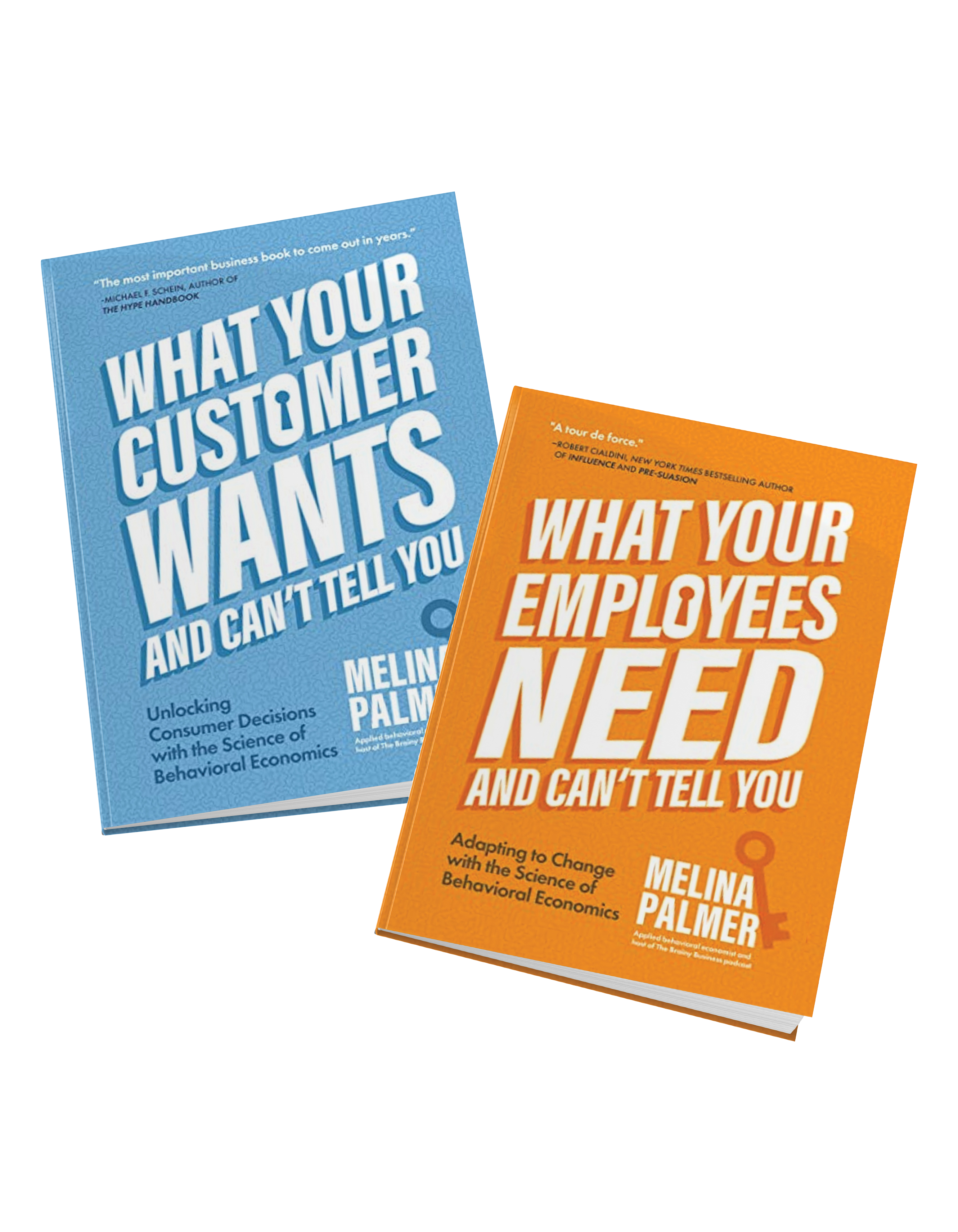 Reviewed by Karen Lynch, Head of Content, GreenBook Fairfield, Connecticut, klynch@greenbook.org.
Reviewed by Karen Lynch, Head of Content, GreenBook Fairfield, Connecticut, klynch@greenbook.org.
Curious about behavioral economics and wonder just what it is anyway? You’re in luck. In these two books, applied behavioral economist Melina Palmer makes the biggest concepts in the field both understandable and relevant to insights professionals.
What Your Customer Wants and Can’t Tell You: Unlocking Consumer Decisions with the Science of Behavioral Economics directly applies to insights work. It focuses on the neuroscience of consumer behavior and provides tools any brand can leverage to influence buyers.
Buyers. Customers. Clients. Do you have any of those? Of course, you do.
So, seriously. Add this book to your reading list. Palmer is a storyteller with style and a communicator with wisdom. For example, early in the book, she explains, “If traditional economics and psychology had a baby, you would have behavioral economics.”
Where has that definition been all my life? It makes total sense, right?
Palmer covers topics like cognitive biases and heuristics and offers real-world examples of how companies have successfully leveraged them.
I appreciated how she shared a high-level overview of the book. She intentionally wrote Part I “to help you see your brain differently—to know how it really works and be open to learning.” Then, she dedicated Part II “to the concepts that are most applicable in business. They were selected among well over 100 to give a foundation without being overwhelming. These chapters are short and set up to be a reference of sorts.”
Reference them you will, of that, I am almost certain.
What I am not certain of is if you’d appreciate the second book in this series. What Your Employees Need and Can’t Tell You: Adapting to Change with the Science of Behavioral Economics is about change management. So, relevant if your organization is going through changes (on some level, aren’t we all?), but only if you have a team that reports to you or if you run a staffed business.
It’s not necessarily recommended reading for everyone.
Palmer stresses that by understanding the psychology of your team members, you can nurture a happier, more productive workforce. She covers topics such as motivation, communication, and the importance of emotional intelligence, all while providing practical advice for managers and business owners.
I am not sure I learned what employees really wanted, and that was disappointing. Does that make you skeptical about the book? Then lean into this little nugget from the book: “If you try to implement the learnings in this book with a skeptical mind, your brain’s confirmation bias… and focusing illusion… will combine to see the things that prove that to be right.”
I introduced a bias by sharing that this second book wasn’t for me, one that might impact your purchase decision; that’s behavioral economics at work. Social proof works for Palmer in the first book, but perhaps not in the second. She explains that topic quite well, along with the concepts of priming, loss aversion, choice architecture, reciprocity, and more.
Really, lots more. So, I second-guess myself. You should buy both books; there’s just so much to learn.
Palmer shared that her goal is “always to make it so these complex topics are easy to understand and apply so that anyone can begin to use them and see results right away.”
No doubt, she achieved her goal. To illustrate her points, Palmer uses relatable examples and engaging anecdotes, making the material accessible. Both books also include helpful tools and exercises for readers to apply the principles.
My Pro Tip? If you choose to read the second book, What Your Employees Need and Can’t Tell You, have your phone nearby and snap a picture of the QR code she includes to access a Glossary of Behavioral Economics terms. It’s pretty sweet. How’s that for a nudge?




